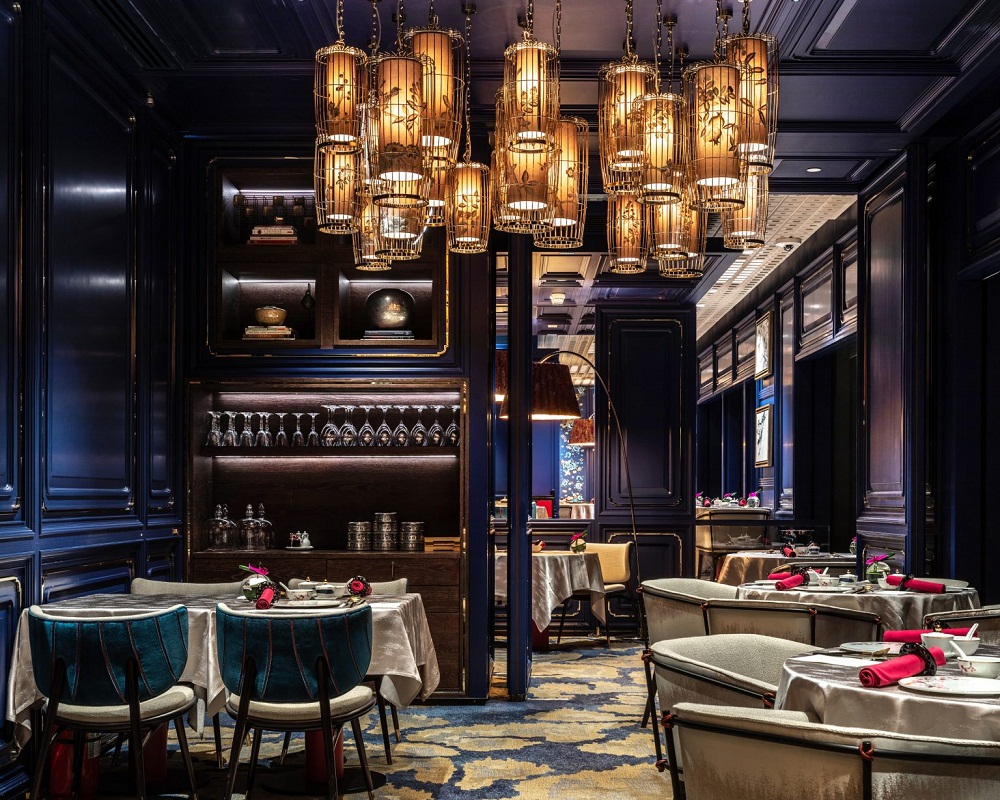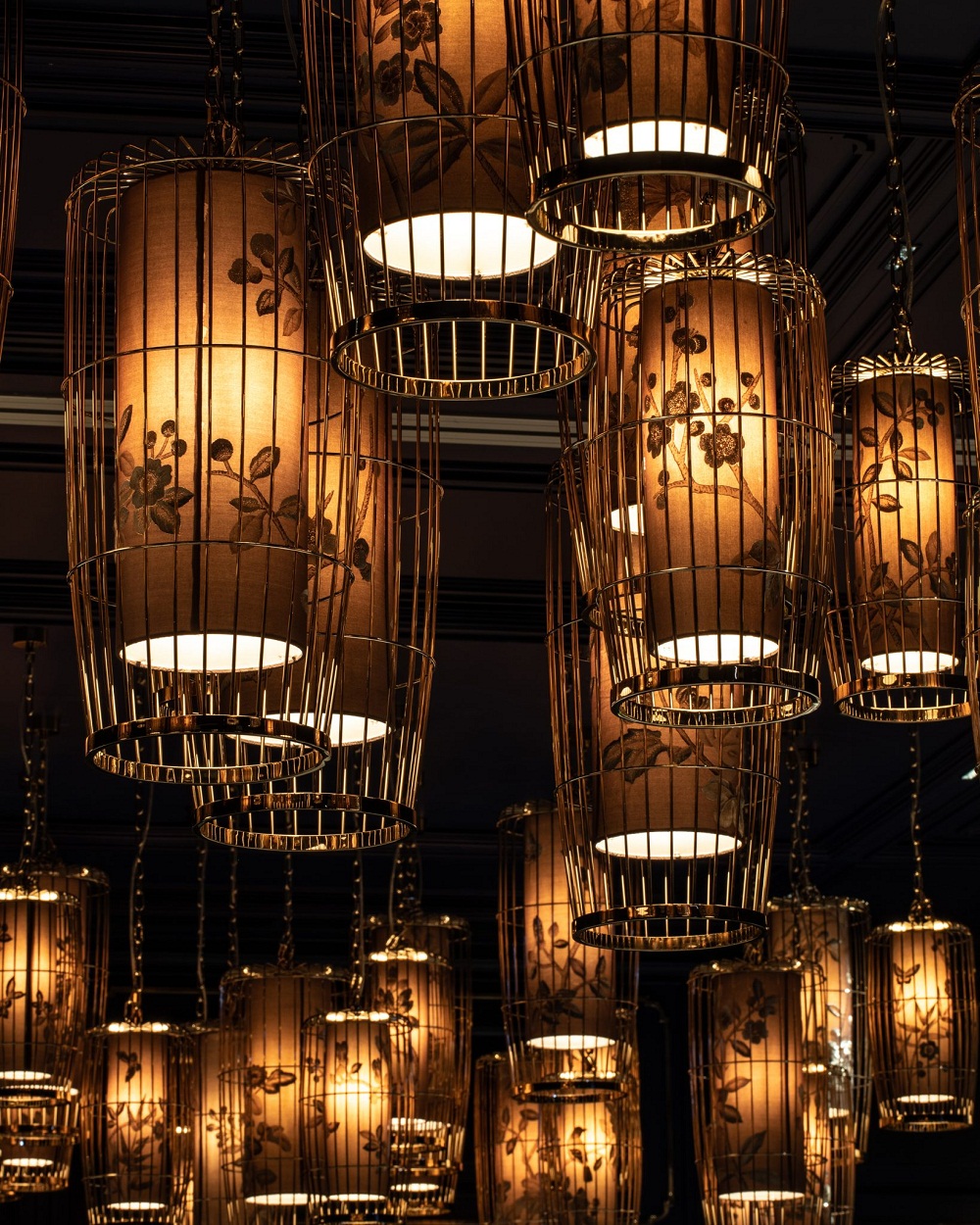Often referred to as Hong Kong’s most beautiful dining space, Michelin-starred Man Wah has been delighting guests with its exquisite Cantonese fare since 1968. Unveiling its new look earlier this year, the dining establishment also updated its menu, which boasts cult classics and some new dishes. Its revitalised interiors designed by Silverfox Studios frame Hong Kong’s renowned city skyline and iconic Victoria Harbour as the main attraction.

With head-to-toe royal blue walls, decked in dark azure lacquered panels inlaid with brass and complemented by the Chinese antiques and elegant lanterns, the restaurant serves a sophisticated look. A back-lit square grid ceiling covers the main dining room to accentuate the sparkling cityscape. Chinese embroidered art panels, framed artwork and delicate embellishments impart a sumptuous elegance to the dining experience.
“The Conceptual approach is both an interpretation and representation of the famous Hong Kong City skyline from the 25 th floor of Mandarin Oriental Hong Kong, coupled with the connection to the famous Mandarin Oriental Hong Kong heritage.

Man Wah has views that directly address the cluttered urban cityscape, these views are an integral part of the dining experience, the dense high rise tower window complexity and the resulting illuminated city panorama have therefore been included into the interior design and detail.” - Silverfox Studio shared
Guided by Chef Wong’s mission to deepen appreciation for Cantonese cuisine, Man Wah’s new menu features a variety of time-honoured dishes, paired with traditional Chinese tea. First off, the deep-fried matsutake mushroom pudding, also known as guo-ja, can be traced back to the veritable Qing Dynasty epicurean Jiang Taishi. Being marinated with abalone, the Shanghainese-style dish is cooked to a certain temperature, which makes each bite bursts to reveal smooth and tender redolent custard. The marinated Abalone is also another tribute to Shanghainese cuisine.
Stewed White Fish Maw, Superior Soup pays homage to two Cantonese traditions - broth, a nutritious side dish to every meal, and Hoi Mei, dried seafood as an essential ingredient. Lentils are boiled in a fine collagen soup, made by simmering chicken, pork feet, pork, duck, chicken feet and a pinch of saffron for 12 hours.
Highlights from the menu also include the sautéed lobster and the pork belly with taro crisps, a dish often eaten during Hakka celebrations, paying tribute to the dying art of village cuisine. For dessert, there are a range of choices from ochilled fig cream, seaweed sago, deep-fried purple sweet potato dumpling to red bean rice cake.
Man Wah will also offer a comprehensive beverage programme and diners can opt for wine and tea pairing. Highlights include a house-made blend of wild chrysanthemum oolong tea which uses a slow drip method, and is distilled one day in advance and served as a refreshing welcome drink for all guests to cleanse the palate before the meal. Along with an extensive collection of premium and rare teas, a sparkling signature blend of Chinese rosella, Earl Grey and strawberry green tea can also be enjoyed, which is cold brewed for 18 hours.

Established and rising China-grown wines and spirits will be featured together with handcrafted fruit-infused rice wine as well. Guests will delight in original aperitifs including a baijiu cocktail which combines lime and tonic with the traditional Chinese spirit, offering a refreshing balance of flavours.
Man Wah seats 92 guests in total, including a private dining room which has the capacity to accommodate 32 and can be divided into two separate rooms.
Like its incredible chain of award-winning restaurants, Man Wah never fails to impress. Its interior refurbishment is a delightful addition to Hong Kong's ever-changing dining scene but the menu remains true to its roots, offering only the best in terms of food and presentation. Believe that this Michelin-starred establishment will be more successful in the future while continuing its legacy as an exquisite homage to time-honoured Cantonese cuisine where discerning diners can often discover overlooked culinary gems and forgotten delicacies alongside an array of refined classics.
